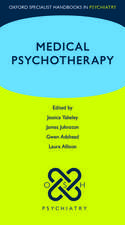Space, Place and Mental Health
Autor Sarah Curtisen Limba Engleză Paperback – 11 noi 2016
| Toate formatele și edițiile | Preț | Express |
|---|---|---|
| Paperback (1) | 428.14 lei 6-8 săpt. | |
| Taylor & Francis – 11 noi 2016 | 428.14 lei 6-8 săpt. | |
| Hardback (1) | 1119.16 lei 6-8 săpt. | |
| Taylor & Francis – 28 aug 2010 | 1119.16 lei 6-8 săpt. |
Preț: 428.14 lei
Preț vechi: 503.69 lei
-15% Nou
Puncte Express: 642
Preț estimativ în valută:
81.95€ • 89.05$ • 68.88£
81.95€ • 89.05$ • 68.88£
Carte tipărită la comandă
Livrare economică 21 aprilie-05 mai
Preluare comenzi: 021 569.72.76
Specificații
ISBN-13: 9781138260009
ISBN-10: 1138260002
Pagini: 316
Dimensiuni: 156 x 234 x 17 mm
Greutate: 0.48 kg
Ediția:1
Editura: Taylor & Francis
Colecția Routledge
Locul publicării:Oxford, United Kingdom
ISBN-10: 1138260002
Pagini: 316
Dimensiuni: 156 x 234 x 17 mm
Greutate: 0.48 kg
Ediția:1
Editura: Taylor & Francis
Colecția Routledge
Locul publicării:Oxford, United Kingdom
Notă biografică
Sarah Curtis is Professor of Geography at the University of Durham, UK
Recenzii
'As public, academic, and policy interest in mental health and well-being continues to grow, we need compelling social science contributions to the debates. Sarah Curtis offers a wonderful synthesis of research undertaken by those with a geographical imagination. This examination of the importance of place and spatial context is a timely and important book.' Tony Gatrell, Lancaster University, UK 'Sarah Curtis has produced a landmark work, deftly demonstrating the power of geographical perspectives in understanding how mental well-being is the product of inter-related material, social and symbolic environments. Inspired by complexity theory, this thought-provoking text weaves a critical and comprehensive journey across multi-disciplinary sources concerning the "relational spaces" of our mental health. Relevant and agenda-setting, Space, Place and Mental Health will be an essential and well-used resource for researchers, teachers and informed practitioners.' Hester Parr, University of Glasgow, UK 'Overall, in Space, Place and Mental Health, Curtis succeeds in providing an interdisciplinary synthesis of research. The depth of engagement with the theoretical and empirical work reviewed in the book allows the reader to gain a uniquely holistic understanding of a complex set of ideas. The author’s own photographs and commentary ground the high level theoretical ideas throughout and the landscape metaphors never feel laboured. The book takes the reader on a winding path through forests, disasters, dreams and clinics - it’s an enjoyable journey.' Journal of Housing and Built Environment 'For this reader, the book strikes the right balance between explaining new concepts in a clear and understandable manner for students at undergraduate level and satisfying the postgraduate need for comprehensive analysis of both research and theory.' Disability & Society
Cuprins
List of Figures, List of Boxes, Foreword, Acknowledgements, 1. Mens Sana in Corpore Sano? Introduction to Geographical Perspectives on Health of the Mind and the Body, 2. ‘Virtuous Landscapes’: Therapeutic Material Settings, 3. Material Hazards and Risks for Mental Health, 4. Resilience, Social Capital and Social Integration, 5. Anomie, Status Anxiety and Fear: Socio-spatial Relations and Mental Ill-health, 6. Dreamscapes and Imagined Spaces: The Meaning of Place for Identity, Spirituality and Mental Health, 7. Post-asylum Geographies of Mental Health Care: Spaces for Therapy and Treatment, 8. Place, Space and Population Mental Health, Bibliography, Index
Descriere
How and why does the social and physical environment matter for mental health and psychological wellbeing in human populations? In this book, this question is examined from a number of different points of view, but with a particular emphasis on ideas and research from health geography. It shows that health geography makes a distinctive focus on the interactions between people and their social and physical environment, and in the ways that it conceptualises space and place.

















